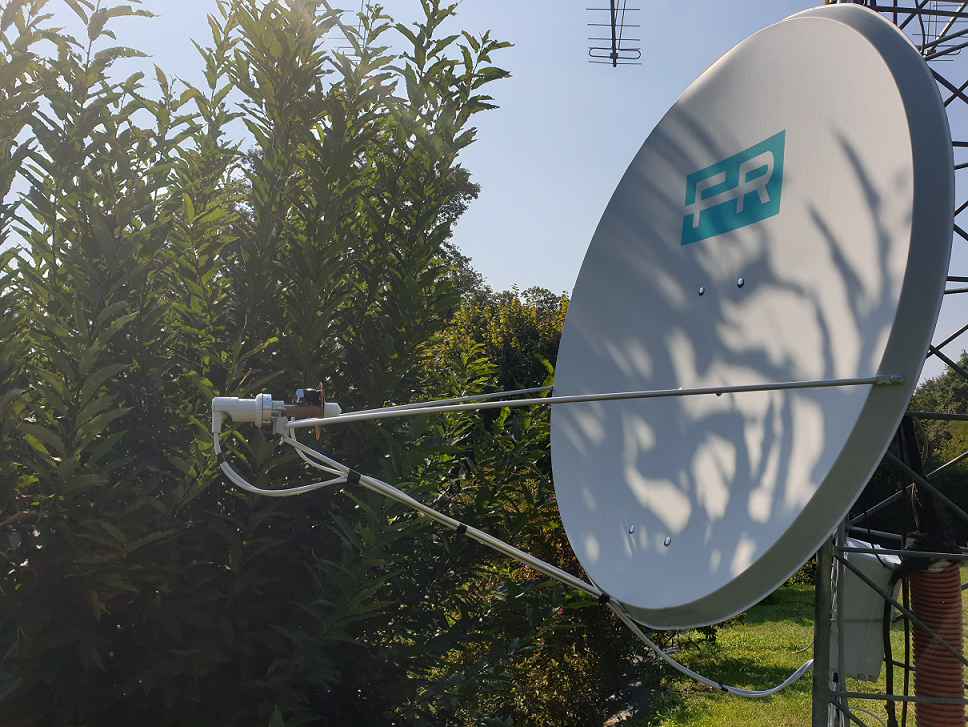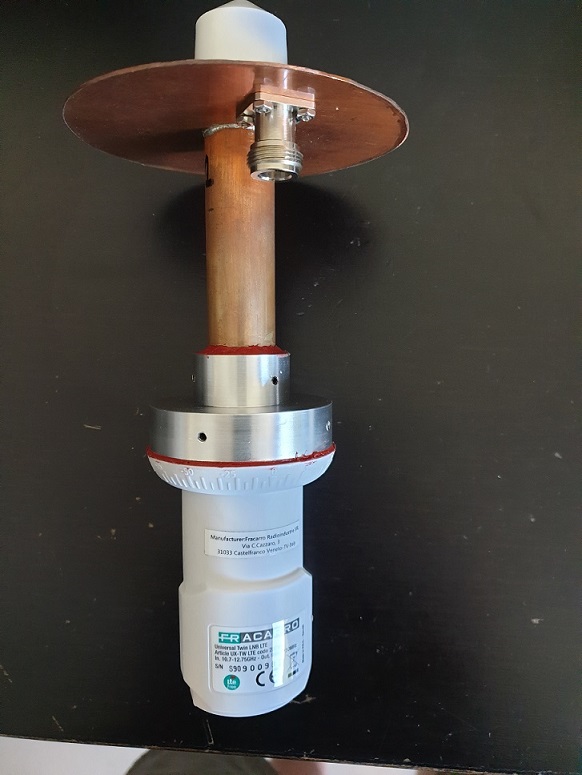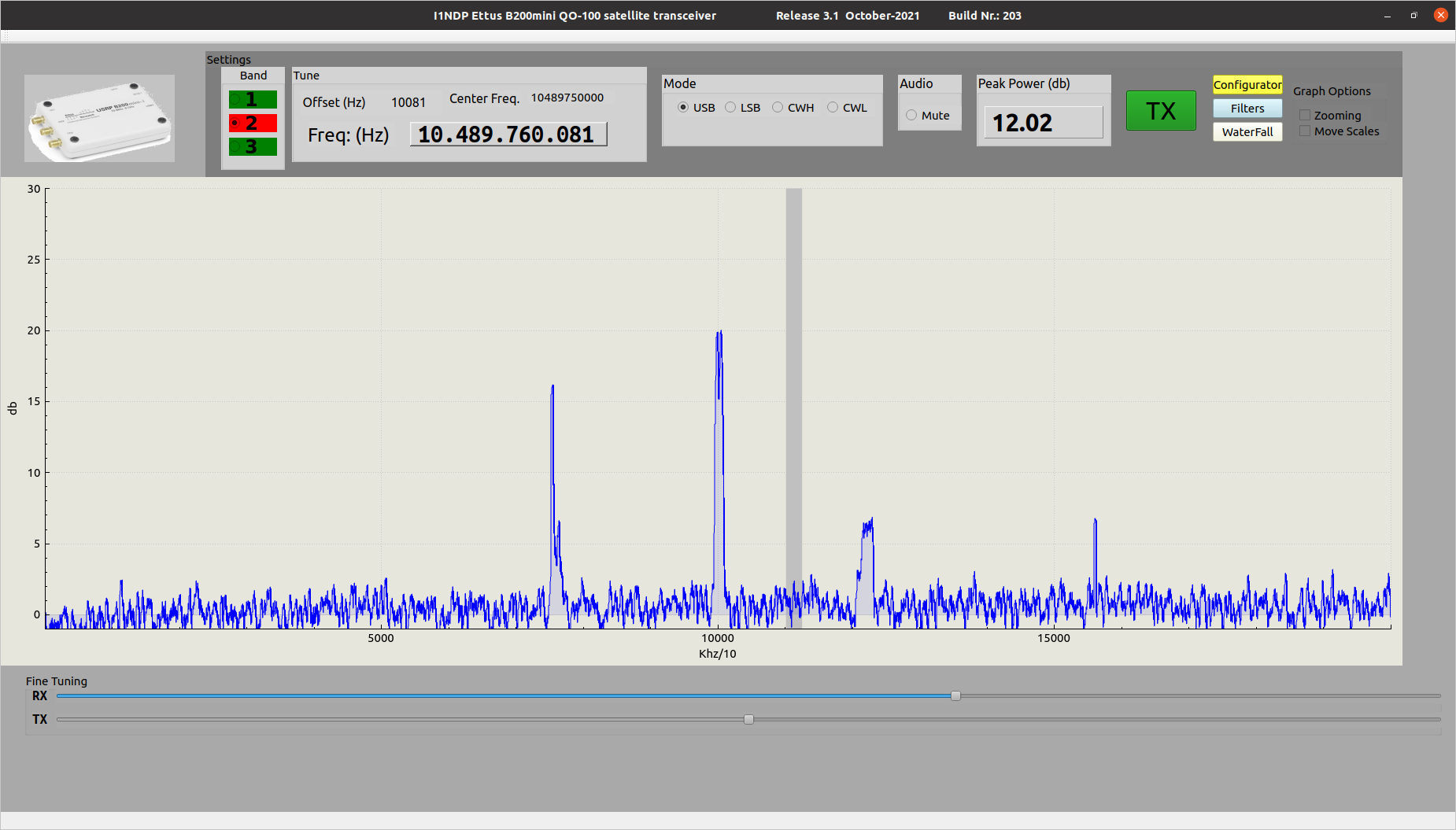
As written in another page I was forced to quit the radio astronomy activity thanks to the overwhelming radar activity on the 23cm band.
My B200mini sdr became then almost useless , taking advantage of the geostationary new satellite which does not need a very complicated antenna system I decided, as a challenge, that the B200 mini with its 60 to 6000 Mhz coverage and transmitting capability could be transformed in an excellent transceiver.
Is the name of the sdr transceiver born and tailored to be used for the analog communications via the QO-100 satellite.
I had already some programming experience in using the B200mini producing the B200 suite as software package for pulsar discovery but very little knowledge on how to build a software transceiver.
Also this application is written in C++ and based on the QT,free version, IDE.
Fortunately the web is reach of information and examples.
Today (September 2019) I have been compiling what can be considered a stable version of the application.
Also B200sdr , as the rest of the suite, runs on a Linux system (Ubuntu 18)
I already made few qsos in SSB and CW with no problems, the following summary shows the main characteristics:
Full duplex transceiver, means be able to transmit while looking at you own signal re transmitted by the satellite
300 Khz bandwidth centered on the QO-100 analog window
Rx from the LNB IF
Tx on 13cm with a max output of +15dbm
Automatic iso frequency between RX and TX (push of a button)
More details on the application can be found on the B200 system document: http://i1ndp.altervista.org/B200/QO-100transceiver.pdf
TV 1.2 m offset dish

Dual band with a patch antenna and a modified LNB to accept the GPS lock

2 WIIFI booster connected in series (20m of coax) to amplify the +15dbm to about 2W .
Modified (as suggested on WEB) to force the transmitting state.
B200sdr also with external GPS controlled frequency reference , the following is a screen shot of the receiver graphic interface with few satellite signals:

Very stable signals width a return amplitude greater than 20db above the noise floor , about same amplitude ast the 2 QO100 beacons.